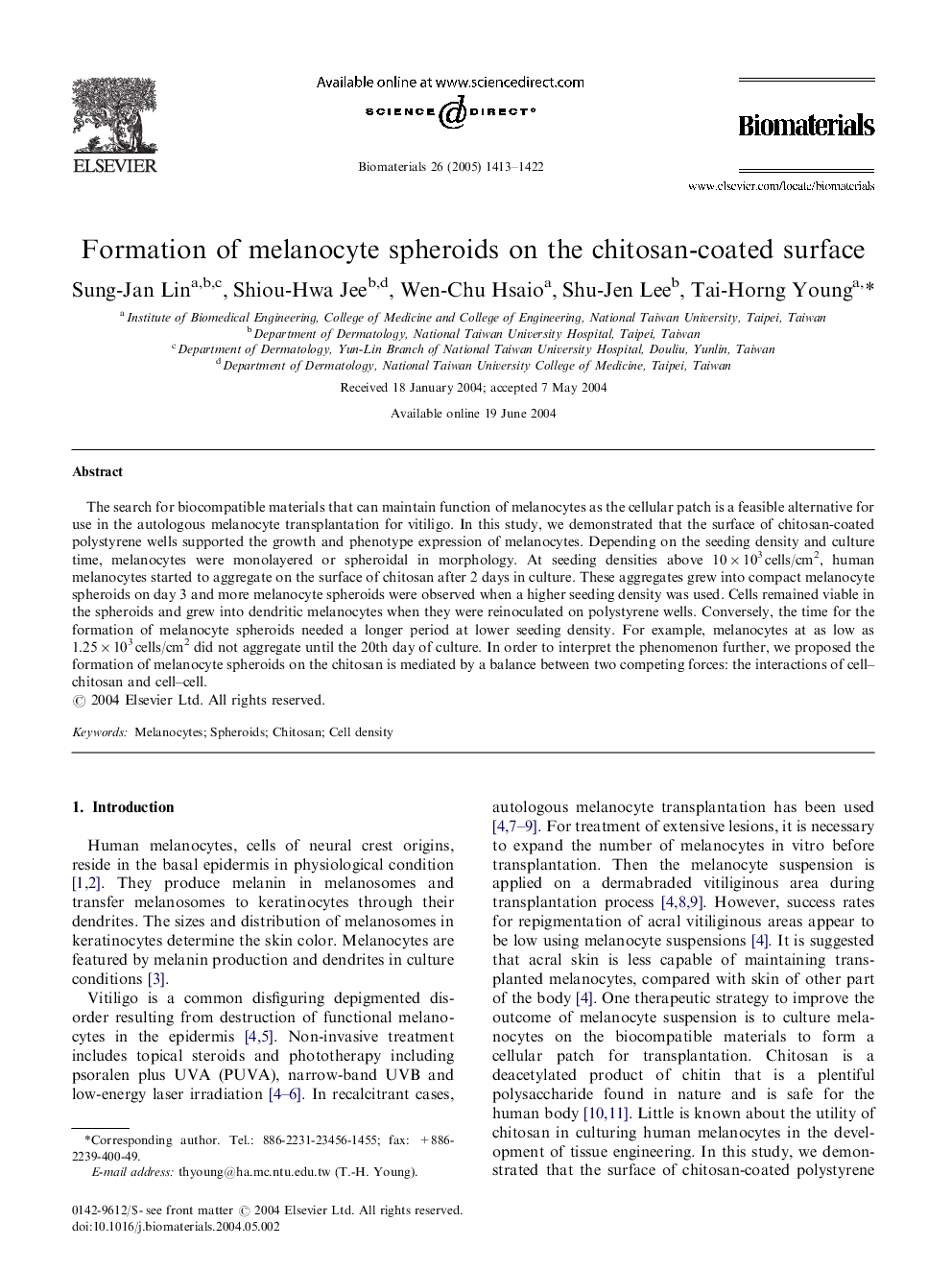| Article ID | Journal | Published Year | Pages | File Type |
|---|---|---|---|---|
| 10230223 | Biomaterials | 2005 | 10 Pages |
Abstract
The search for biocompatible materials that can maintain function of melanocytes as the cellular patch is a feasible alternative for use in the autologous melanocyte transplantation for vitiligo. In this study, we demonstrated that the surface of chitosan-coated polystyrene wells supported the growth and phenotype expression of melanocytes. Depending on the seeding density and culture time, melanocytes were monolayered or spheroidal in morphology. At seeding densities above 10Ã103Â cells/cm2, human melanocytes started to aggregate on the surface of chitosan after 2 days in culture. These aggregates grew into compact melanocyte spheroids on day 3 and more melanocyte spheroids were observed when a higher seeding density was used. Cells remained viable in the spheroids and grew into dendritic melanocytes when they were reinoculated on polystyrene wells. Conversely, the time for the formation of melanocyte spheroids needed a longer period at lower seeding density. For example, melanocytes at as low as 1.25Ã103Â cells/cm2 did not aggregate until the 20th day of culture. In order to interpret the phenomenon further, we proposed the formation of melanocyte spheroids on the chitosan is mediated by a balance between two competing forces: the interactions of cell-chitosan and cell-cell.
Related Topics
Physical Sciences and Engineering
Chemical Engineering
Bioengineering
Authors
Sung-Jan Lin, Shiou-Hwa Jee, Wen-Chu Hsaio, Shu-Jen Lee, Tai-Horng Young,
